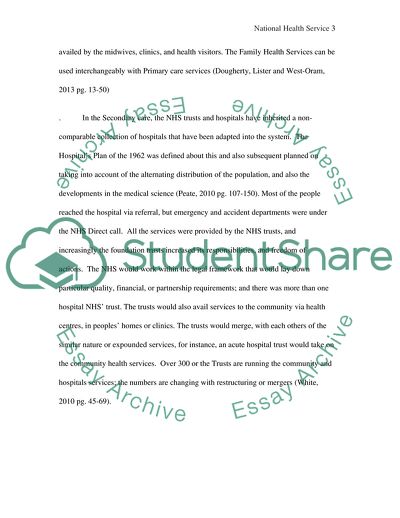Cite this document
(National Health Service Research Paper Example | Topics and Well Written Essays - 2000 words, n.d.)
National Health Service Research Paper Example | Topics and Well Written Essays - 2000 words. Retrieved from https://studentshare.org/health-sciences-medicine/1861670-health-studies-discuss-the-origins-structure-and-function-of-the-nhs-and-discuss-the-major-challenges-the-nhs-will-face-over-the-next-five-years
National Health Service Research Paper Example | Topics and Well Written Essays - 2000 words. Retrieved from https://studentshare.org/health-sciences-medicine/1861670-health-studies-discuss-the-origins-structure-and-function-of-the-nhs-and-discuss-the-major-challenges-the-nhs-will-face-over-the-next-five-years
(National Health Service Research Paper Example | Topics and Well Written Essays - 2000 Words)
National Health Service Research Paper Example | Topics and Well Written Essays - 2000 Words. https://studentshare.org/health-sciences-medicine/1861670-health-studies-discuss-the-origins-structure-and-function-of-the-nhs-and-discuss-the-major-challenges-the-nhs-will-face-over-the-next-five-years.
National Health Service Research Paper Example | Topics and Well Written Essays - 2000 Words. https://studentshare.org/health-sciences-medicine/1861670-health-studies-discuss-the-origins-structure-and-function-of-the-nhs-and-discuss-the-major-challenges-the-nhs-will-face-over-the-next-five-years.
“National Health Service Research Paper Example | Topics and Well Written Essays - 2000 Words”. https://studentshare.org/health-sciences-medicine/1861670-health-studies-discuss-the-origins-structure-and-function-of-the-nhs-and-discuss-the-major-challenges-the-nhs-will-face-over-the-next-five-years.


